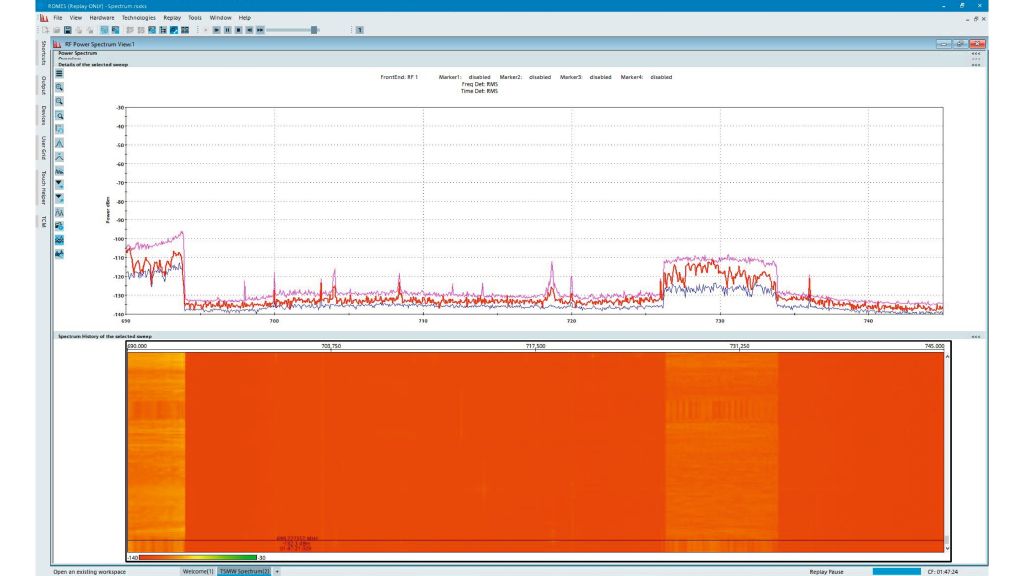Rohde & Schwarz solution
Start with a drive test in the area using a fast and sensitive scanning RF receiver to detect and record the location, frequency and spectral shape of interference sources. The results are then handed over to a postprocessing tool to analyze and identify signals that meet certain criteria, such as minimum receive signal levels.
Compared to directly deploying interference hunting teams with spectrum analyzers or handheld receivers and manually searching for interference (the traditional way), the automated method has three big benefits:
- Identifying potential interference signals and their characteristics is far faster
- Collecting and analyzing data are separated, meaning time-consuming data collection can be done far more quickly with fewer skilled personnel
- The experts in interference hunting teams can be used more effectively since they can focus on predefined interference locations
The final step in the spectrum clearance process is eliminating interference sources which can be automated with a direction finding system, such as the R&S®MNT100 RF interference locator in combination with R&S®MobileLocator software.
The spectrum clearance solution consists of:
- A network scanner (R&S®TSMA6B or R&S®TSME6)
- The ROMES universal software platform for network optimization and troubleshooting
- R&S®ROMES4NPA network problem analyzer software for postprocessing
Below is a picture of the battery-powered R&S®TSMA6B autonomous network scanner that can fit neatly into a shoulder bag for comfortable drive or walk testing. The ROMES drive/walk test software runs on the next unit of computing (NUC) PC integrated into the R&S®TSMA6B. The software is supported by a GPS receiver and mapping capabilities. Measurements can be controlled with a tablet that displays results to the user in real time.














